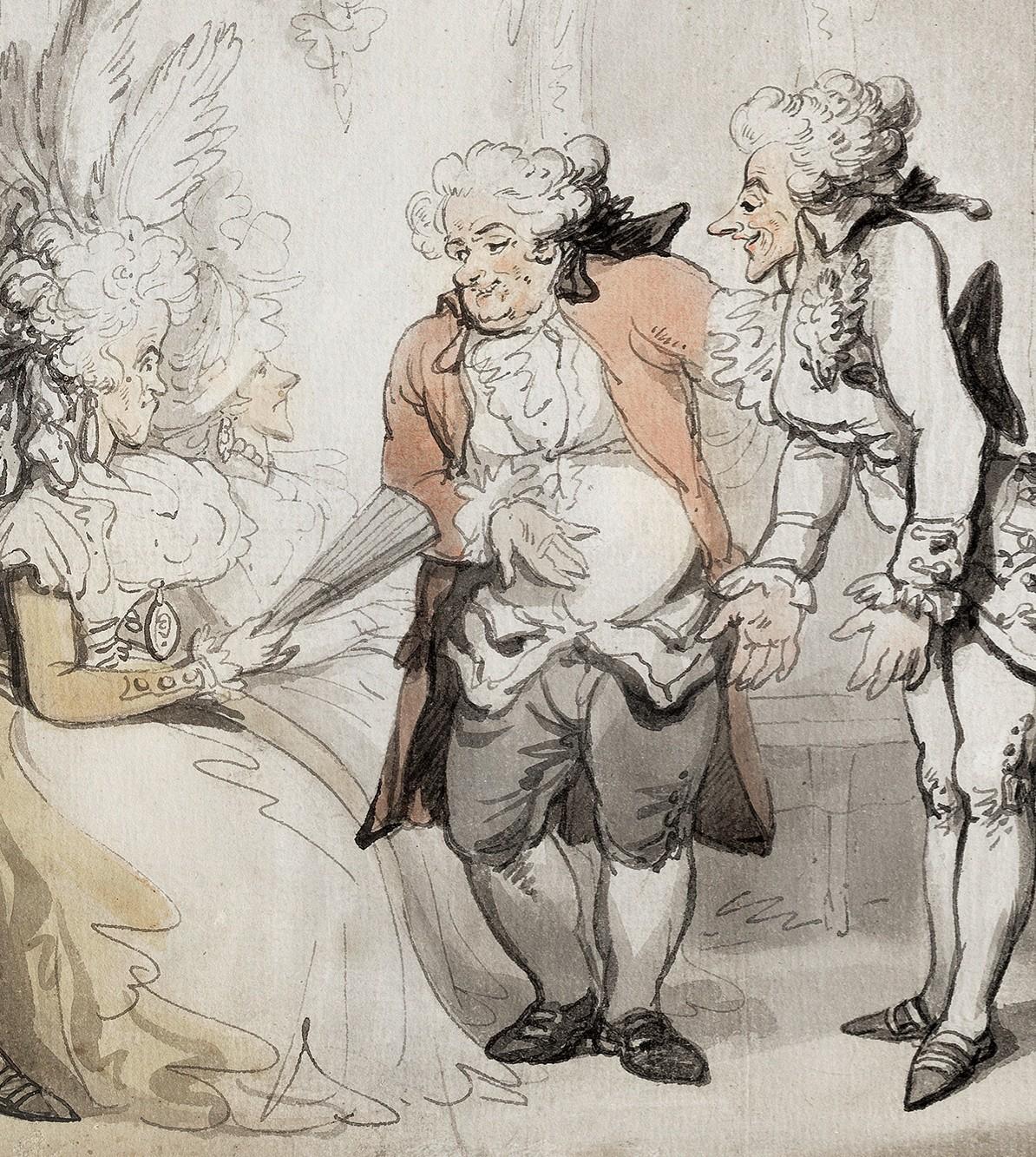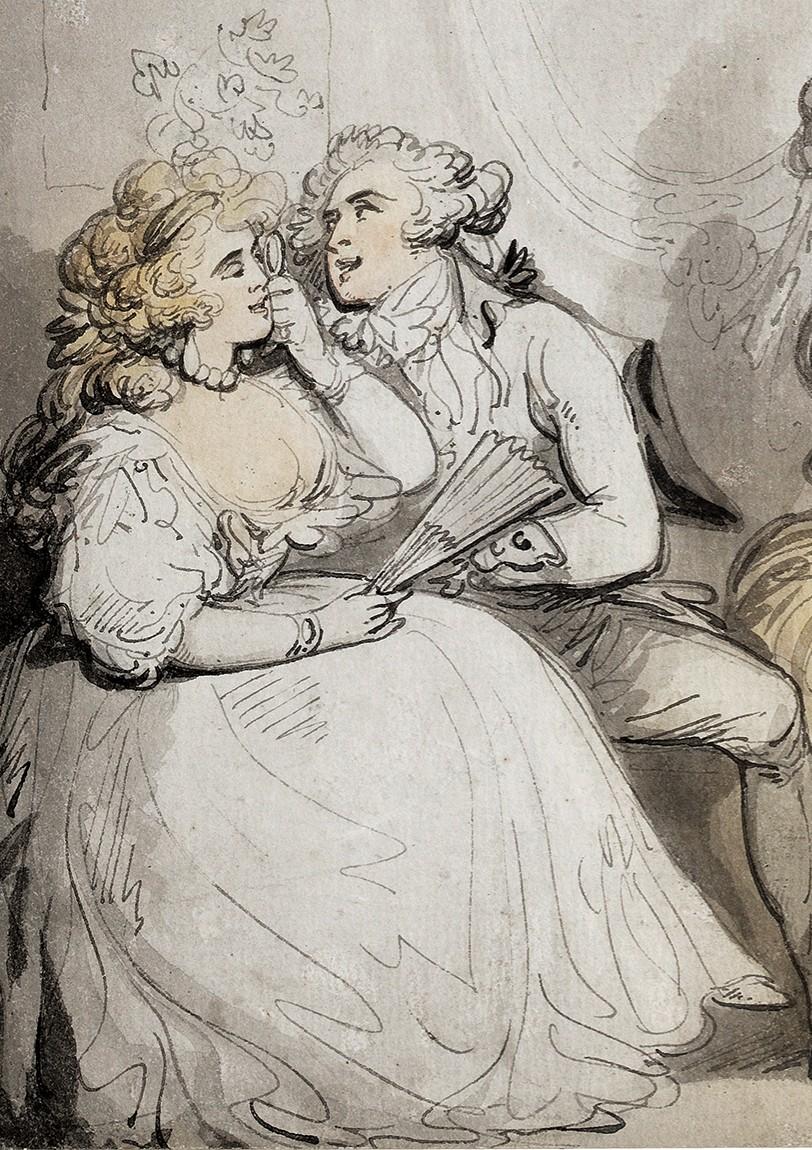From the time of the Roman occupation of Britain, perhaps even earlier, Bath has been known for the warm, mineral-rich waters that bubble up from beneath the ground, waters long believed to have special healing properties, whether one bathes in them or drinks them. The city's now famous Roman baths were not actually rediscovered until the 1870s, but from the beginning of the 18th century, and following in the footsteps of Queen Anne and other aristocratic or otherwise influential figures, Bath evolved into a fashionable resort and spa. Those coming to take the waters needed to be distracted and entertained and such key duties came to be the responsibility of a Master of Ceremonies, the most famous of whom was 'Beau' Nash (1674-1762).
Over a period of 50 years, Nash put Bath on the social map, but the drawing that prompted this piece dates from the 1780s and the MC depicted would have been either Richard Tyson or James King – most likely the latter.
When Britain's attempt to hang on to her American colonies was finally thwarted, King, who had been serving his country in that lost cause, returned to England and in 1785 found employment as MC of Bath's Lower Assembly Rooms. There he served for 20 years before being appointed to oversee the more prestigious Upper Rooms, where he officiated until his death in 1816.
King even makes a brief, if anonymous appearance in Jane Austen’s Northanger Abbey, introducing the book's heroine, Catherine Morland, to Henry Tilney, the man she will eventually marry. (To avoid any confusion over dates, I should point out that Jane's book was completed in 1803, though only first published in December 1817, five months after her death.)































